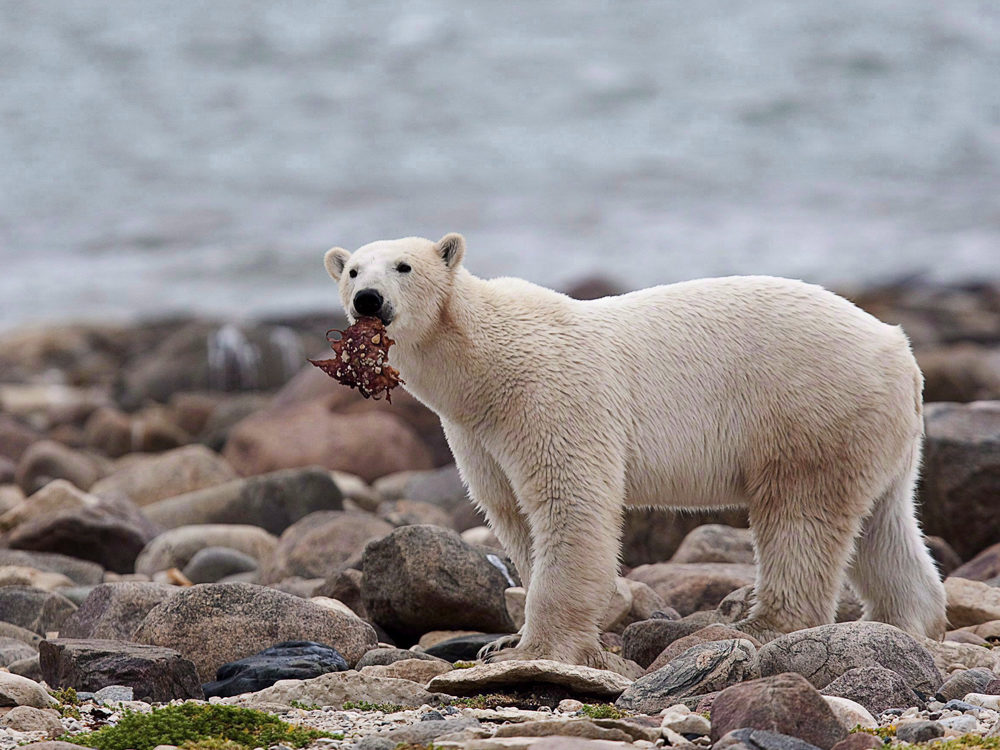
The story is a bit long and complex. That's good, though. Let's take the opportunity to hold an informal seminar from which it's hoped that the critics will learn and benefit. Starting today, you're invited to sit back and enjoy a five-part series on polar bear genes in light of Behe's thesis in Darwin Devolves.
What Behe Says in Darwin Devolves
First, consider what Behe actually argues in Darwin Devolves on the topic. He observes that studies of the polar bear genome reveal certain genes were under strong selection since these wonderful bears split from a common ancestor with black bears a few hundred thousand years ago. An article in the journal Cell by Liu et al. (2014) analyzed the genes that were under "under stronger positive selection" in polar bears. This was done using algorithms that compare amino acid changes in those genes to other known homologous versions of the gene to predict whether the mutations were benign or "damaging" to each protein's function. Behe looked at the results and wrote the following:
The polar bear's most strongly selected mutations - and thus the most important for its survival - occurred in a gene dubbed APOB, which is involved in fat metabolism in mammals, including humans. That itself is not surprising, since the diet of polar bears contains a very large proportion of fat (much higher than in the diet of brown bears) from seal blubber, so we might expect metabolic changes were needed to accommodate it.Citations 1 and 2 here are both to Liu et al. (2014), and citation 2 is specifically to their Table S7. Everything Behe says in these paragraphs is exactly correct in light of the data and conclusions presented by that paper - except, that is, for one issue that is the most trivial of errors and has zero effect on Behe's argument. Don't worry, critics, we'll get to that toward the end of the series. But you're going to be disappointed because it isn't the sort of big error that Lents and Hunt and the rest are demanding that Behe retract. In fact, it is so small that they admit they hardly care about it.
But what precisely did the changes in polar bear APOB do to it compared to that of other mammals? When the same gene is mutated in humans or mice, studies show it frequently leads to high levels of cholesterol and heart disease. The scientists who studied the polar bear's genome detected multiple mutations in APOB. Since few experiments can be done with grumpy polar bears, they analyzed the changes by computer. They determined that the mutations were very likely to be damaging - that is, likely to degrade or destroy the function of the protein that the gene codes for.
A second highly selected gene, LYST, is associated with pigmentation, and changes in it are probably responsible for the blanching of the ancestors' brown fur. Computer analysis of the multiple mutations of the gene showed that they too were almost certainly damaging to its function. In fact, of all the mutations in the seventeen genes that were most highly selected, about half were predicted to damage the function of the respective coded proteins. Furthermore, since most altered genes bore several mutations, only three to six (depending on the method of estimation) out of seventeen genes were free of degrading changes. Put differently, 65 to 83 percent of helpful, positively selected genes are estimated to have suffered at least one damaging mutation. (Darwin Devolves, pp. 16-17, emphasis in the original)
It Started on Darwin Day
The objections from anti-ID bloggers started on February 12, Darwin Day, when biologists Nathan Lents and Arthur Hunt co-authored a post on Lents's Human Evolution blog. This was the same day Lents published a highly inaccurate article at Adventures in Poor Taste which fundamentally misrepresented Behe's most basic arguments about the origin of chloroquine resistance, made in his previous book The Edge of Evolution. More on that later in the series, too.
Lents and Hunt made two main objections, both of which argue that polar bear genes weren't as damaged by mutations as Behe claimed. This series will evaluate their two objections. It turns out that it is Behe's conclusions, not those of his critics, that most closely followed the conclusions and methodology of Liu et al. (2014). Behe wrote a reply to Lents and Hunt which we're going to discuss as well. It will be seen that the chart Behe posted was entirely fair and reasonable, and was missing no data at all that challenges his thesis.
After Lents and Hunt, Richard Lenski also wrote a couple of replies to Behe, including one that questioned whether the polar bear genes were really damaged at all. Behe replied to Lenski, too. We're going to evaluate these objections in more detail and see that the best evidence available indicates polar bear genes became adapted by fixing many mutations that were probably damaging.



A year from now, after I digest and understand all this highly complex stuff to a point where I can make a half-assed attempt at explaining it, (if indeed there is anything to explain, -and dammit if there isn't looking like there is ), I suspect I'll lose the dozen or so remaining 'friends' I have on FaceBook. -The ones who managed to survive all my other epochs of rebellious wild statement. I wonder who will be left when I finally declare that Evolution is bunk? Ha ha!
At which point I suppose I'll be about done. Shouldn't anyone be done at that point?
Thanks, SOTT! The truth will set you free, (of dinner dates).
And all the darling folk out there like to think of themselves as edgy and subversive . As rebels! Ha! -Sure, when "rebel" means wearing tight pants, a sparkle beard and getting your news from a comedy show.
Bring it on!